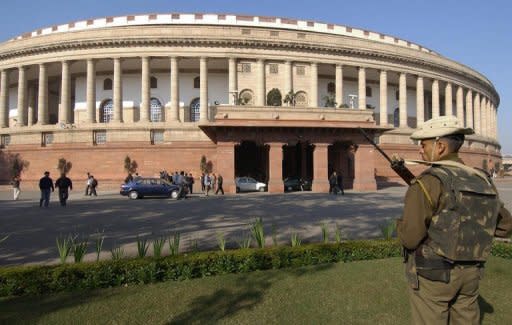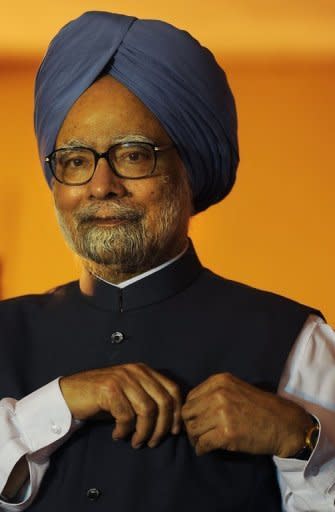New cracks appear in India's ruling coalition
New cracks emerged in India's ruling coalition on Thursday as its partners clashed over which candidate to put forward to be the next president, further weakening the already shaky alliance. The Congress party, the biggest member of the left-leaning coalition, planned to choose Finance Minister Pranab Mukherjee as its candidate for the mainly ceremonial post, which will be decided in elections on July 19. But in a move that mirrors previous difficulties, minority partner the Trinamool Congress publicly snubbed him, saying it preferred embattled Prime Minister Manmohan Singh. "If there is a universal consensus on our choices... then it will be good for this nation," Trinamool leader Mamata Banerjee told reporters late on Wednesday. Trinamool and another regional party, the Samajwadi Party led by Mulayam Singh Yadav, teamed up to propose Singh and two other candidates, which were immediately rejected by Congress on Thursday. "We cannot afford to spare Dr. Manmohan Singh as prime minister. The other two names are not acceptable," Congress General Secretary Janardan Dwivedi told reporters. The Samajwadi Party is not in the coalition but generally lends support from the outside. Its votes will be vital in the presidential election, which is decided by members of parliament and regional lawmakers. The result of the wrangle was furious behind-the-scenes negotiating to find a common candidate and renewed speculation that the United Progressive Alliance (UPA) coalition might fall apart. The Times of India said the disharmony "raised doubts if the coalition would last its full term," which is scheduled to end with elections in 2014. Banerjee and her Trinamool MPs have consistently defied the Congress party, forcing a series of embarrassing policy U-turns on everything from rail fares and petrol prices to foreign investment in the retail sector. These differences, as well as a string of corruption scandals, are seen by analysts as the reason for a lack of economic reforms and clear policy direction by the government, which has presided over a dramatic fall in economic growth. There was more bad economic news on Thursday, with data showing exports in May fell 4.16 percent year-on-year despite the weakness of the rupee, which is at historic lows against the US dollar. Figures also showed inflation creeping up again, reaching 7.55 percent on an annual basis in May, which will pose a dilemma to the central bank when it meets next week. In the January-March period, the economy grew just 5.3 percent, its slowest quarterly expansion in nine years. Businesses and some analysts have called on the central bank to slash the cost of borrowing, which was raised 13 times between March 2010 and October 2011, but inflation remains above its comfort level.




